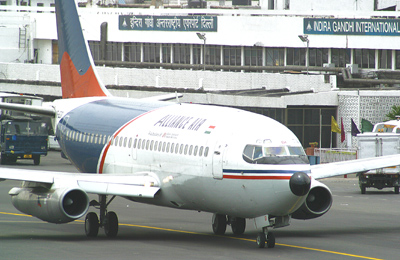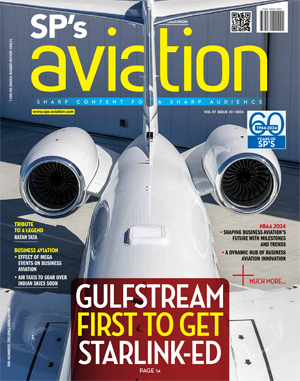INDIAN ARMED FORCES CHIEFS ON OUR RELENTLESS AND FOCUSED PUBLISHING EFFORTS

SP Guide Publications puts forth a well compiled articulation of issues, pursuits and accomplishments of the Indian Army, over the years

"Over the past 60 years, the growth of SP Guide Publications has mirrored the rising stature of Indian Navy. Its well-researched and informative magazines on Defence and Aerospace sector have served to shape an educated opinion of our military personnel, policy makers and the public alike. I wish SP's Publication team continued success, fair winds and following seas in all future endeavour!"

Since, its inception in 1964, SP Guide Publications has consistently demonstrated commitment to high-quality journalism in the aerospace and defence sectors, earning a well-deserved reputation as Asia's largest media house in this domain. I wish SP Guide Publications continued success in its pursuit of excellence.
Flight Safety: Clear & Present Danger

Greater the impetus to aviation more should be the attention paid to safety, but in India, cut-throat competition and relentless market forces are inexorably pushing safety concerns into a corner.
In 2007, a survey conducted by the Aviation Safety Network (an exclusive service of the Flight Safety Foundation) drew the spotlight on 26 fatal multiengine airline accidents. One could draw comfort comparing the figure with the running average of 34 for the previous 10 years as also from the fact that none of the 26 accidents occurred in India. However, there is a growing feeling of disquiet among aviation circles about the differential pace between the quantitative growth in Indian aviation and the qualitative nature of its safety practices. Greater the impetus to aviation more should be the attention paid to safety, but cut-throat competition and relentless market forces are inexorably pushing safety concerns into a corner. Who are the major stakeholders in the process of ensuring Indian skies are safe to fly in? What can be done to effectively address the problem?
Admittedly, the Ministry of Civil Aviation under Praful Patel has shown great insight and foresight, taking bold decisions and implementing them wholeheartedly. Indeed, Patel was perhaps the best incumbent for the post at this historic phase of consolidation in the Indian aviation industry. That said and despite some dedicated professionals in the Directorate General Civil Aviation (DGCA), aviation regulations in India are more often than not shoddily executed. The structure itself, clogged by kibitzing bureaucratic shenanigans, is not ideally suited for a dynamic, vertically mobile industry, raring to grow rapidly. Regulatory changes, in response to changes in ground (and sky) realities are slow in taking shape, the process often waylaid by strong lobbies of doubtful credence. As such, the DGCA finds itself at odds with the gigantic leaps aviation is poised for; its cause is not helped by government policies for filling vacancies whereby preferential treatment allotted to some classes necessarily translates to merit being not always the strict criterion when appointing individuals to key positions.





